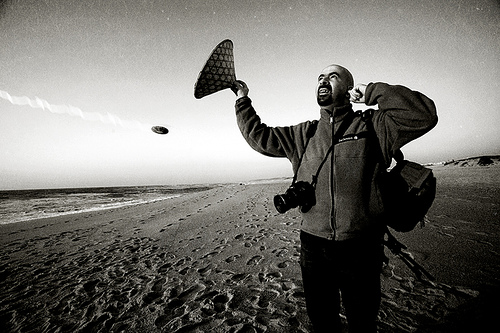Space Aliens Disenfranchised by DTV Transition
MOUNTAIN VIEW, CALIF.: Nielsen may have vastly undercounted the number of households disenfranchised in last week’s DTV transition. A senior astronomer at the SETI Institute writes that there may be “zillions of viewers who might not have a converter box or a digital-ready TV--namely, the aliens.” Seth Shostak works for the nonprofit organization focused on the Search for Extraterrestrial Intelligence by way of radio frequency transmissions. The project uses, among other resources, one of the world’s largest supercomputer comprised of more than 5 million individually volunteered PCs, to monitor for RF activity from outerspace.
Conversely, the RF emissions generated by TV and radio signals are considered a sort of collective ping directed at the far reaches of the Galaxy. The switch to digital broadcasting could leave our space neighbors watching intergalactic snow on their “wall-size plasmas,” Shostak writes at Space.com.
“That’s right--extraterrestrials who might be picking up our analog broadcasts could miss out. Ever since the Second World War, television signals, as well as FM radio and radar, have served as homo sapiens’ emissaries into deep space. High-frequency, high-power broadcasts have filled an Earth-centered bubble more than 60 light-years in radius with signals. If there are any aliens nearby, they would have been hard-pressed to find trilobites, dinosaurs, or even the Greeks and Romans. But, thanks to ‘I Love Lucy,’ they could find you--or at least your parents.”
Shostack explains that there’s energy spike in the luminance carrier of undulating analog signals, that could conceivably be detected by an advanced antenna, or even “acres and acres of cheap rabbit ears or rooftop yagis.” DTV signals don’t contain this energy spike.
“It’s not impossible to pick up our DTV broadcasts from your favorite M-class planet, but I reckon it would require antennas at least five times larger than demanded for good, old analog TV,” he writes. “ET may balk at the additional cost.”
A similar phenomenon is taking place on Earth, where legacy antennas aren’t picking up TV signals moved from the ultra- to the very-high frequency spectrum. David Liles of Goldsboro, N.C., is dealing, but not happily.
“It was an idea promoted by idiots and handled by fools,” he told The Goldsboro News-Argus. People that wanted those frequencies couldn’t use the ones they had us on.”
The fed has recommended that earthlings perform channel scans on receivers and move antennas closer to windows. No similar advisory has been issued for extraterrestrials with reception issues. -- Deborah D. McAdams
(Image by Paulo Alegria)

Get the TV Tech Newsletter
The professional video industry's #1 source for news, trends and product and tech information. Sign up below.
